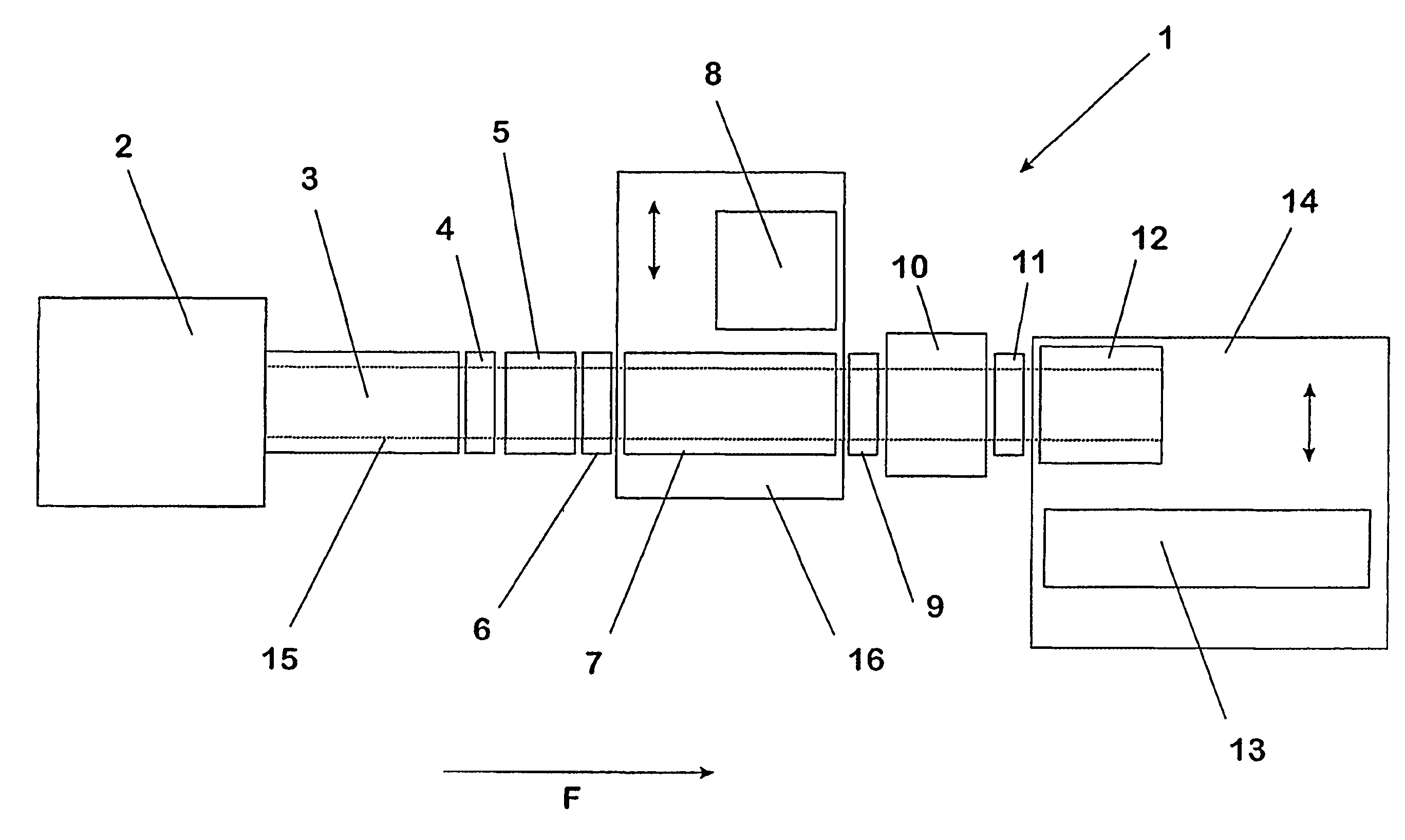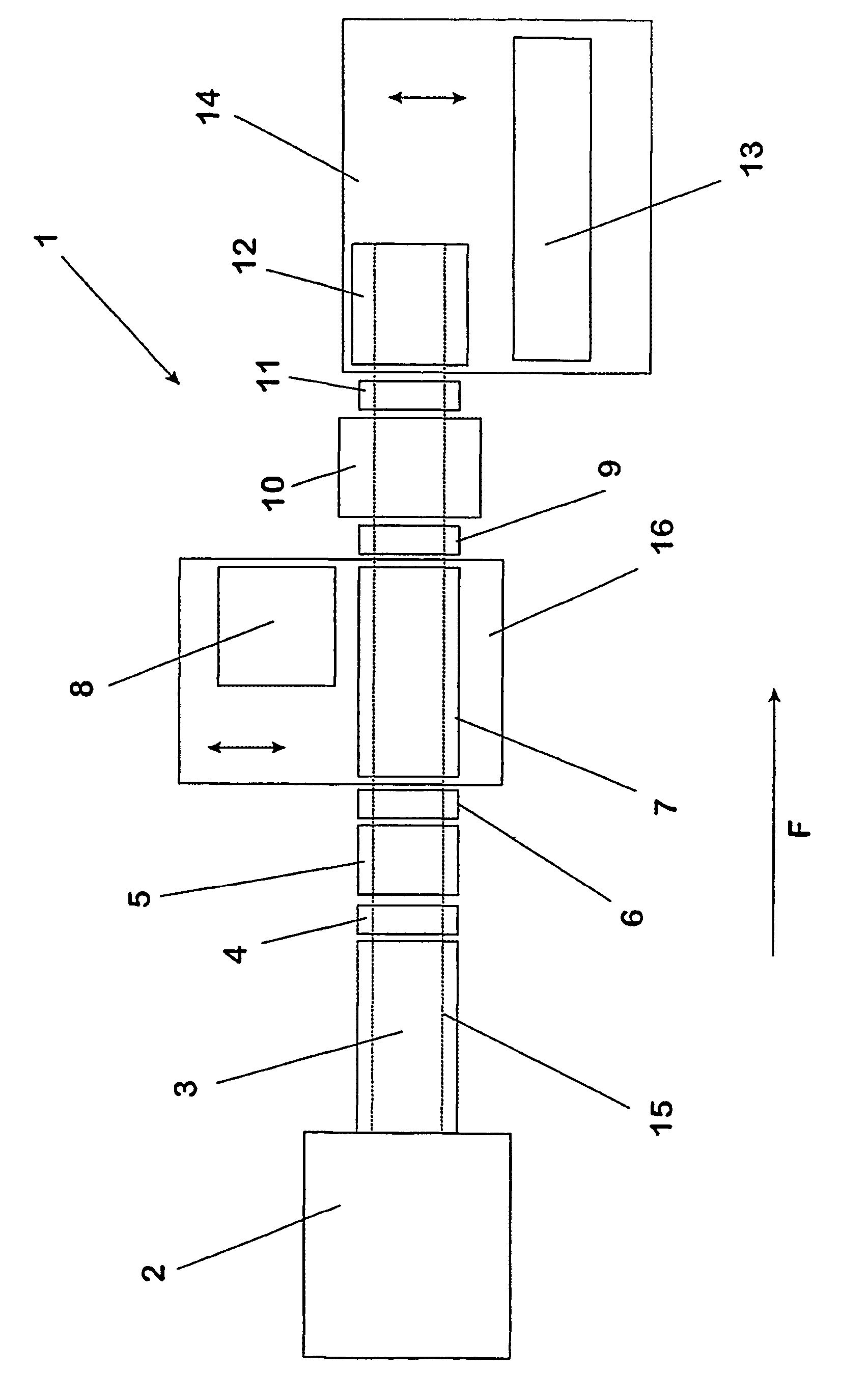Method for producing a magnesium hot strip
a hot strip and magnesium technology, applied in the direction of manufacturing tools, work heating devices, metal rolling arrangements, etc., can solve the problems of high manufacturing cost, high manufacturing cost, high production cost, etc., and achieve the effect of reducing manufacturing effort and expenditure and improving deformability
- Summary
- Abstract
- Description
- Claims
- Application Information
AI Technical Summary
Benefits of technology
Problems solved by technology
Method used
Image
Examples
Embodiment Construction
[0019]The cast-rolling plant 1 comprises, in the conveying direction F, arranged behind one another, a melting furnace 2, a solidification installation 3, a first driver device 4, a set of shears 5, a second driver device 6, a homogenisation furnace 7, a first coiling device 8, a third driver unit 9, a reversing stand of rolls 10, a fourth driver unit 11, a fourth coiling device 12, and a roller table 13.
[0020]The coiling device 12 and the roller table 13 are set up on a platform 14, which is capable of being moved transversely to the conveying direction F in such a way that, in a first operating position, the coiling device 12, and, in a second operating position, the roller table 13, are arranged at the end of the conveying path 15 of a magnesium strip produced in the cast-rolling plant 1. In the same way, the homogenisation furnace 7 and the coiling device 8 are arranged on a platform 16, so that in each case one of these devices is arranged in a first operational position next t...
PUM
| Property | Measurement | Unit |
|---|---|---|
| Temperature | aaaaa | aaaaa |
| Temperature | aaaaa | aaaaa |
| Temperature | aaaaa | aaaaa |
Abstract
Description
Claims
Application Information
 Login to View More
Login to View More - R&D
- Intellectual Property
- Life Sciences
- Materials
- Tech Scout
- Unparalleled Data Quality
- Higher Quality Content
- 60% Fewer Hallucinations
Browse by: Latest US Patents, China's latest patents, Technical Efficacy Thesaurus, Application Domain, Technology Topic, Popular Technical Reports.
© 2025 PatSnap. All rights reserved.Legal|Privacy policy|Modern Slavery Act Transparency Statement|Sitemap|About US| Contact US: help@patsnap.com


